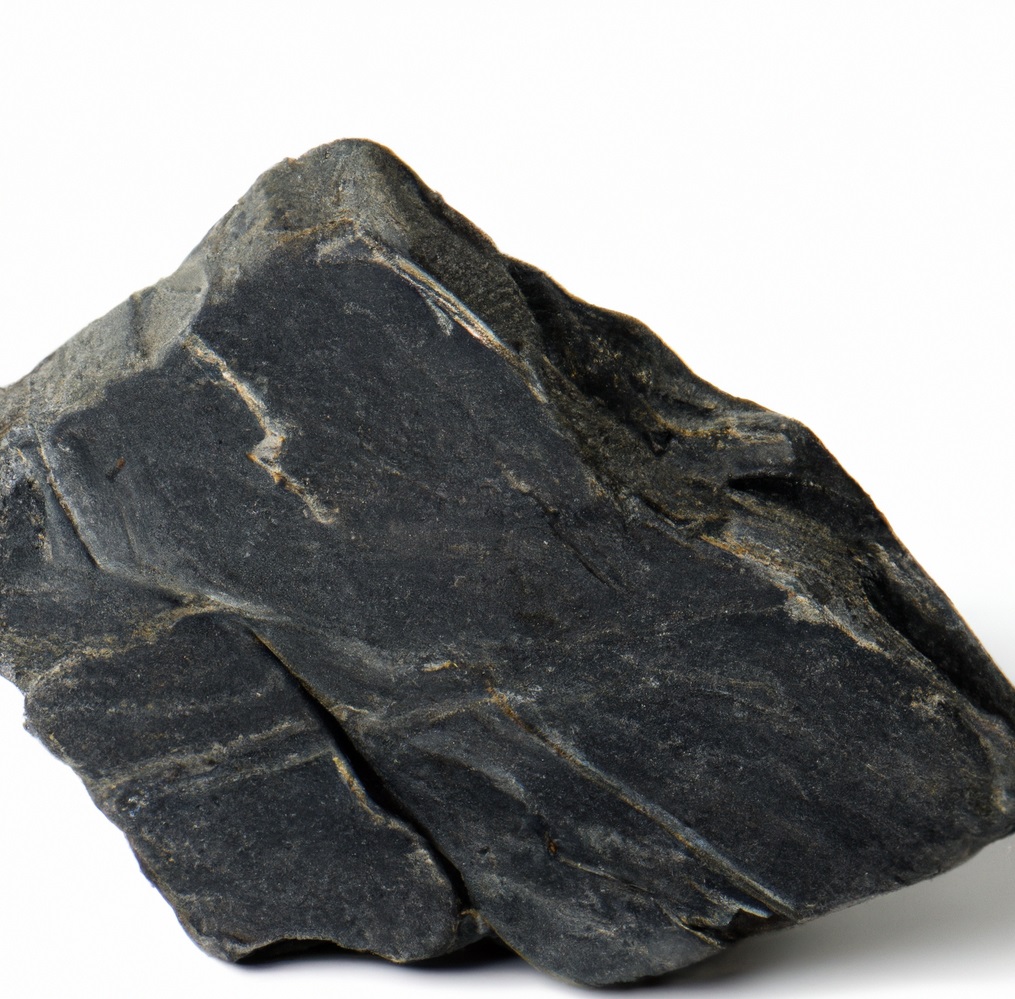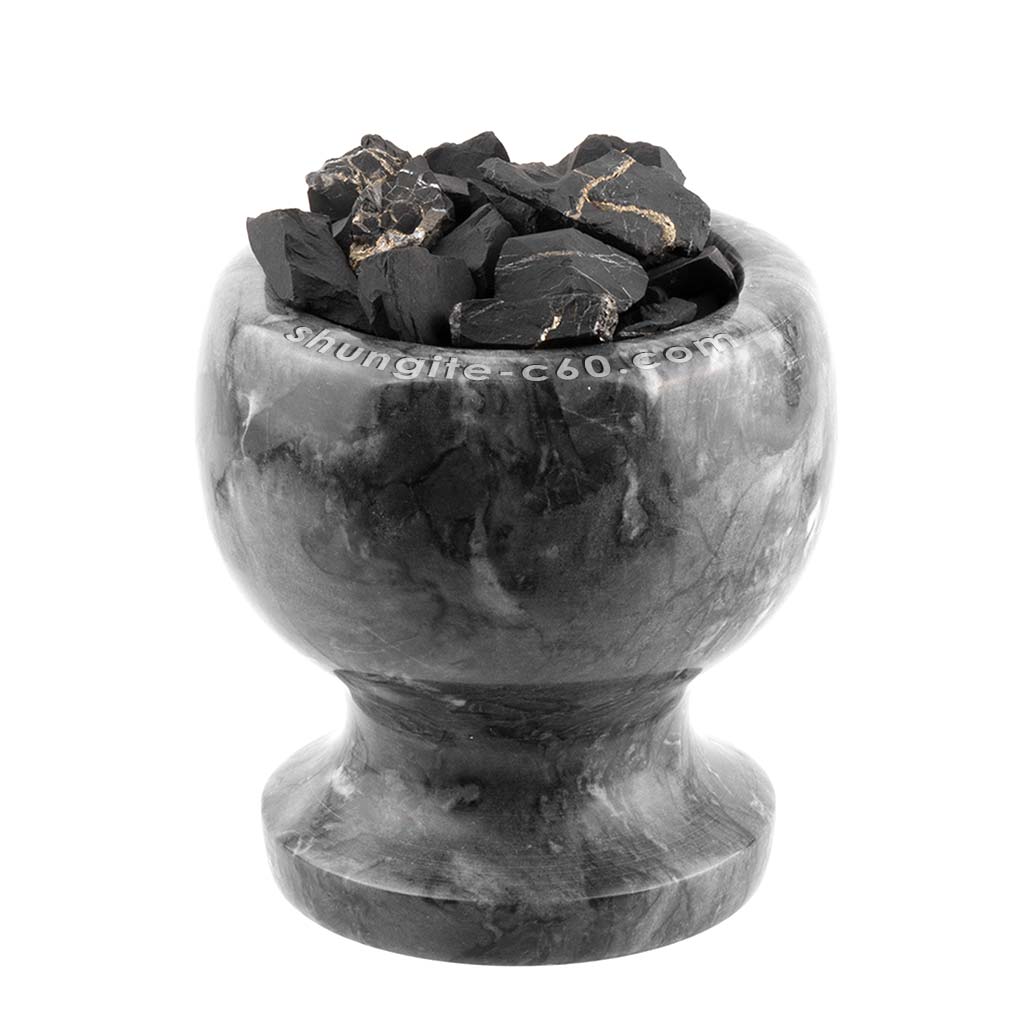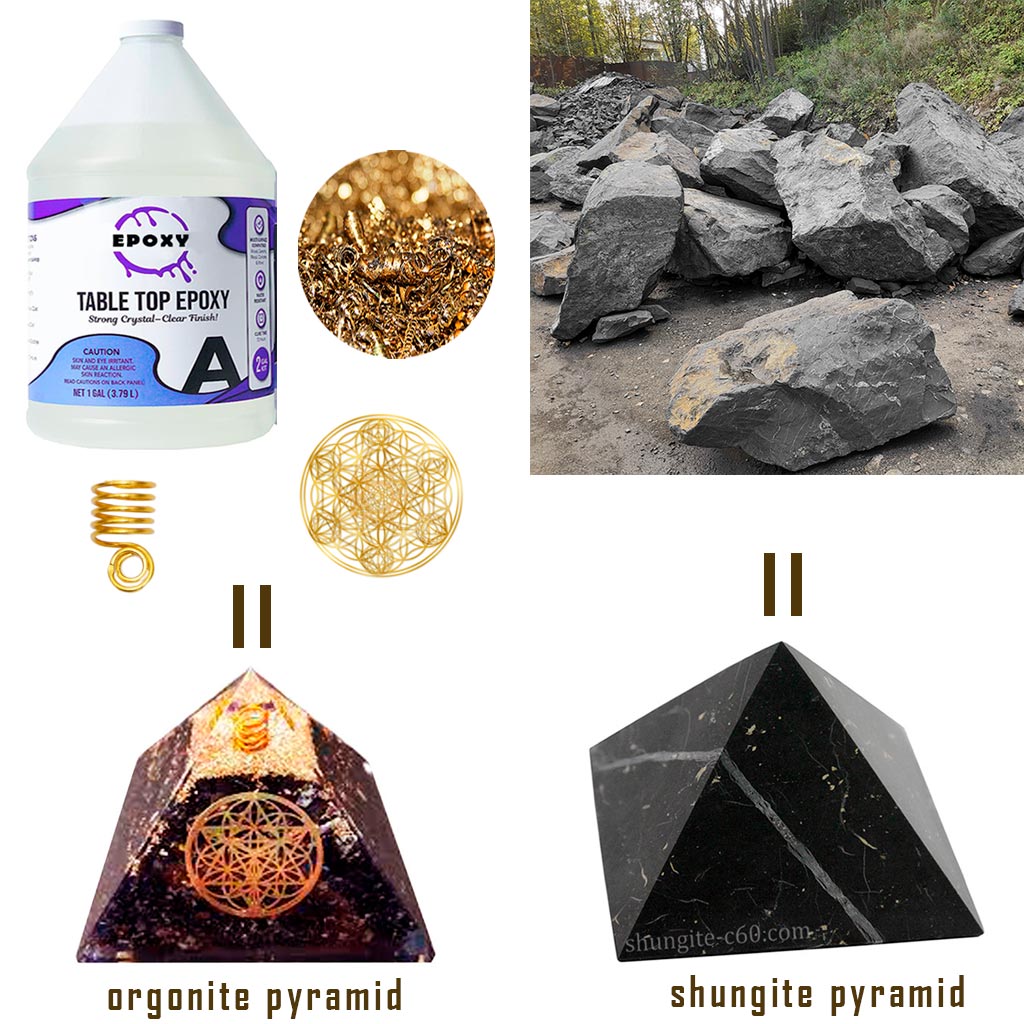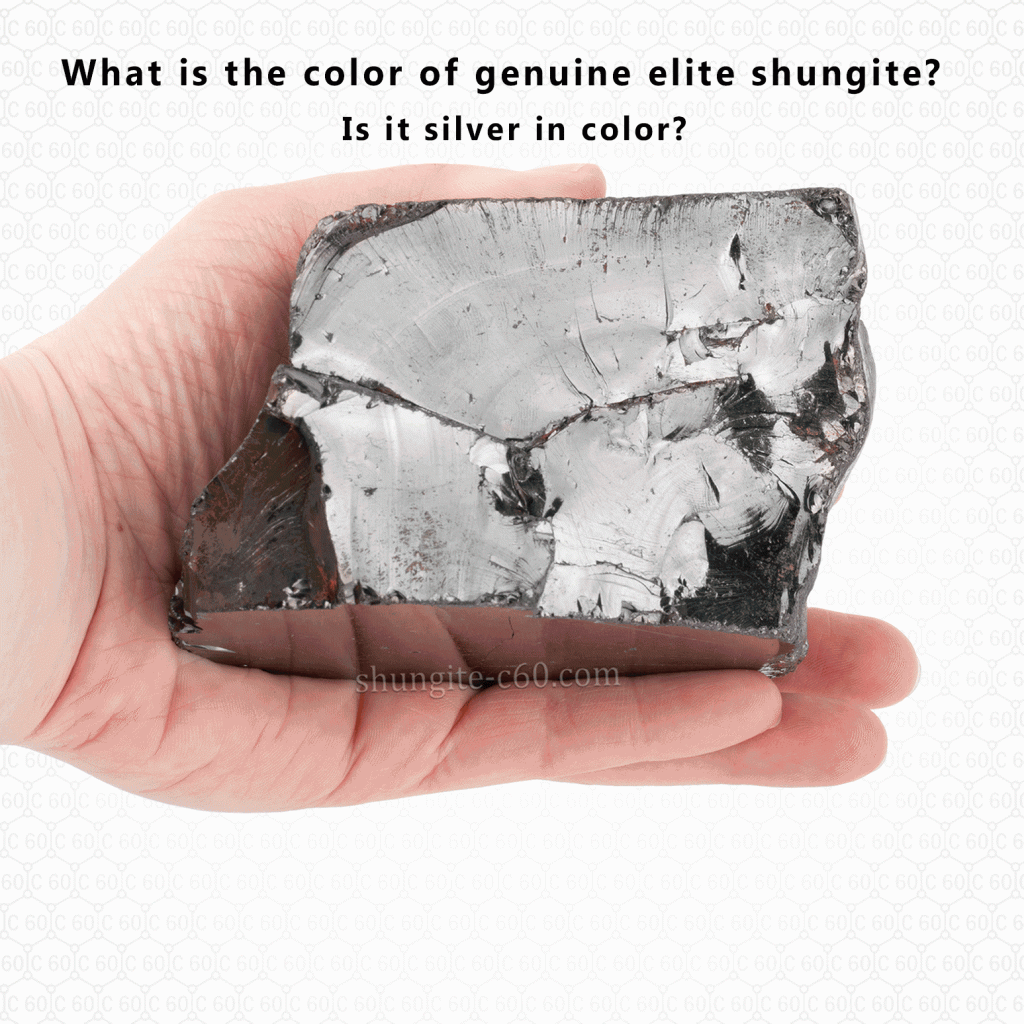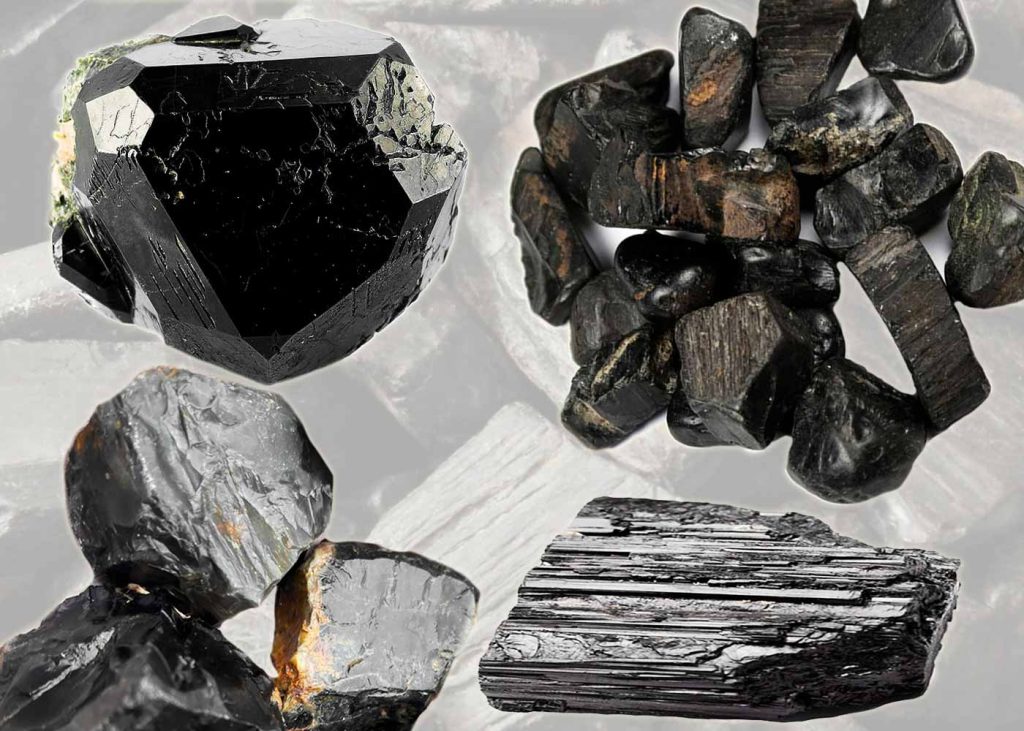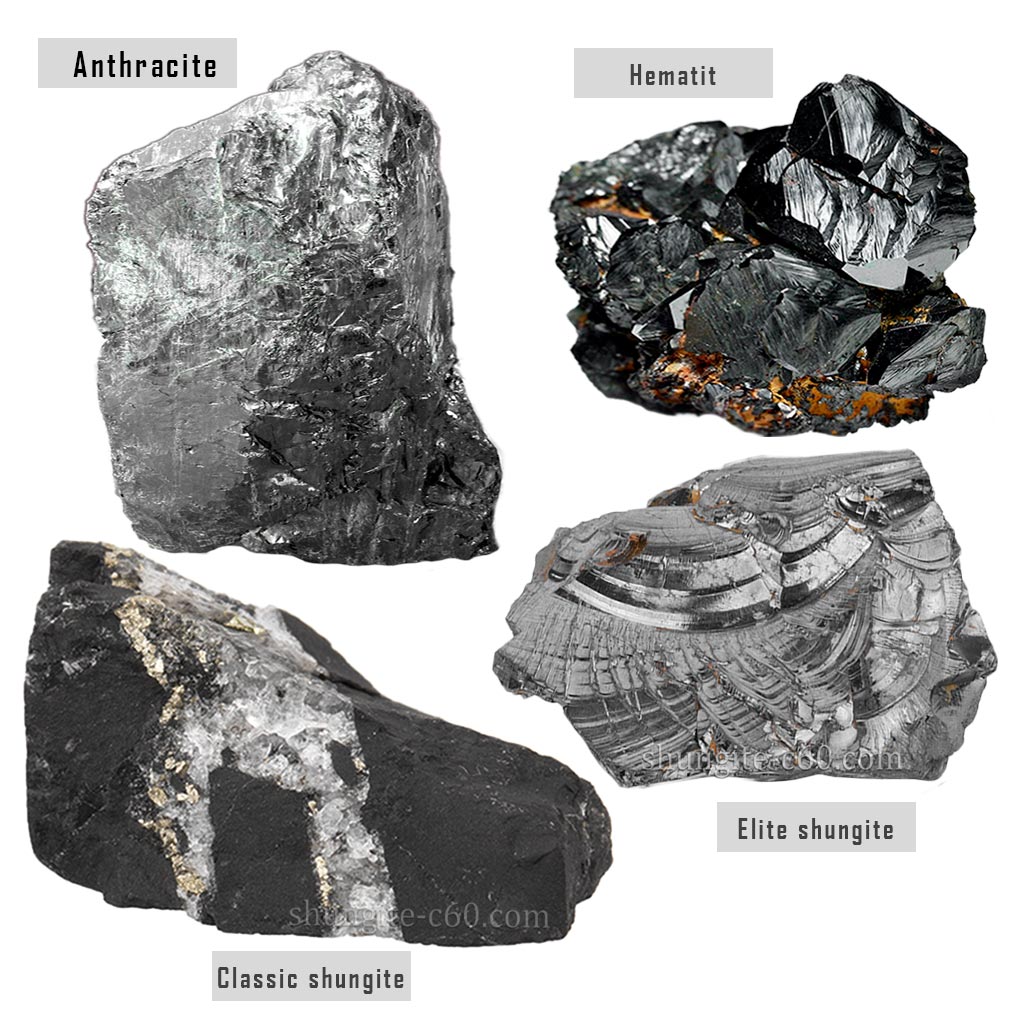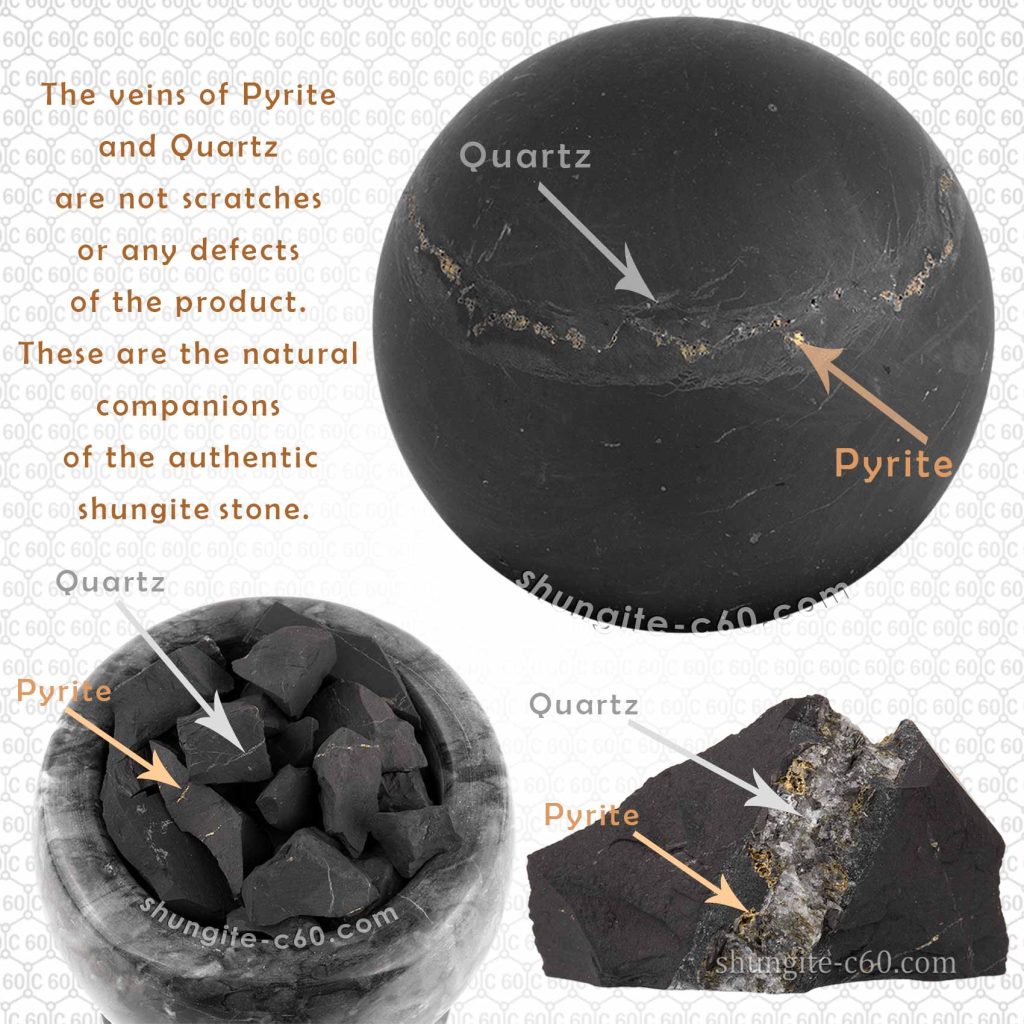
Introduction
From a scientific point of view, Shungite fullerenes this is a non-graphite carbonaceous substance. Shungite is a rare form of minerals. A feature of this mineral is its unique chemical composition, the main element of which is a unique form of carbon. Shungite fullerene it is form of carbon that is contained in the stone. Even more unique this mineral makes the fact that this mineral is extracted only in one place on earth. This region is the Republic of Karelia in Russia. Currently, it is the only natural material on the planet earth in which fullerenes were discovered in their natural state.
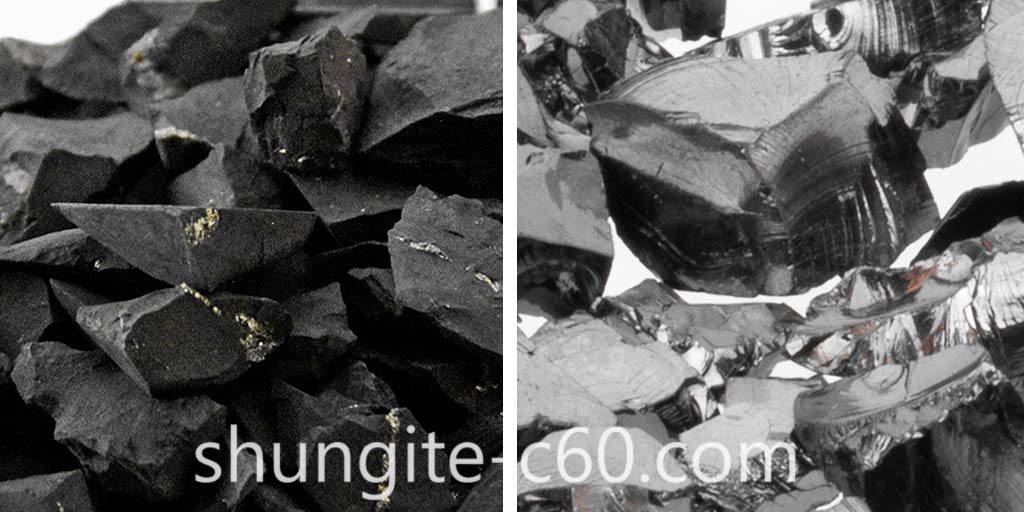
Fullerenes
A little more than two decades ago, the wide variety of crystalline forms of carbon (graphite, diamonds, and carbines) was supplemented by the discovery of fullerenes and nanotubes, the first of which can form a new molecular form of carbon – fullerite. Intensive research has shown that fullerites have a number of unique properties that are important both in the fundamental and applied aspects, of which the most characteristic are magnetic and electrical, including superconductivity.
Discovery of fullerenes
Fullerenes (or buckyball) are a rather unusual class of molecules that represent one of the forms of carbon existence (the so-called allotropic modifications). The well-known diamond and graphite are also nothing but different allotropic forms of carbon. Fullerenes in shungite are in the form of molecules C60 and C70.
The discovery of fullerenes is one of the clearest examples of the predictive power of science: back in the 70s of the XX century, theoretical quantum chemical calculations were made, predicting the existence of such molecules, but only in 1985 they were first discovered in the study of graphite vapors after its laser irradiation. Later these allotropic forms have been identified in the earth’s natural minerals. To be more precise — it is a one-of-a-kind mineral – Russian Shungite stone. But recently it was found that these unique carbon balls are even in outer nebulae of space.
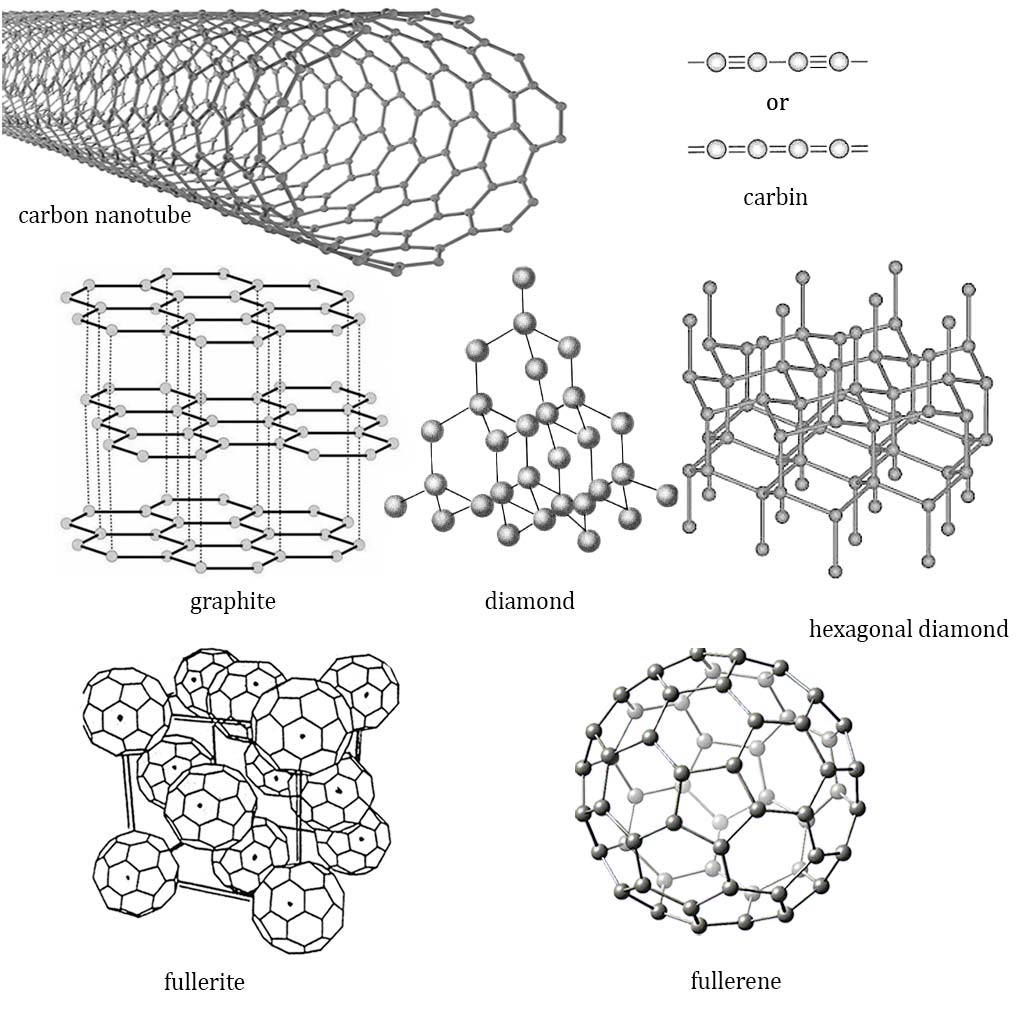
Simultaneously with the industrial synthesis of fullerenes, the task of searching for their natural analogues arose. The first object where buckyballs were found was the c60 rocks from Karelia (Russia). The presence of fullerenes has been established in some rocks.
For example, in fulgurite from Florida (USA) and in carbonaceous rocks of the Onaping formation (Canada). However, according to some estimates, the simplest fullerenes make up only a small fraction of the family of carbon clusters and their derivatives. Therefore, by analogy with graphite – and diamond-like structures, we can assume that in nature there are also non-crystalline fullerene-like carbons. That have structural features and properties of fullerenes and their derivatives.
Structural state of fullerene-like forms of carbon
The current understanding of the structural state of fullerene-like forms of carbon and their relationship to Genesis is very uncertain. Published papers present often contradictory results about the conditions of their synthesis and structure.
There is no consensus about the origin of the fullerenes found in various rocks. This situation is caused both by problems in analyzing fullerenes and by the fact that natural non-crystalline carbon matter is much more complex than its crystalline forms.
Prospects for the study of shungite fullerene
Modern approaches to the study of mineral raw materials. This including carbon-containing rocks, are based on the search for fundamentally new areas of use. In addition, in high-tech technologies that give the greatest economic effect. Shungite fullerene that are unique in their Genesis, material composition, and carbonaceous matter manifestations are promising in this regard.
Their properties are determined by the structure, carbon distribution, and nature of polymineral structure formation. The study of these features at the micro – and nanoscale levels can contribute not only to the solution of the fundamental problem of the evolution of carbonaceous matter. But also to the development of new directions for the practical use of carbon-containing rocks.
Used of fullerenes
Physicists and chemists have found many uses for fullerenes. This are used in the synthesis of new compounds in optics, the production of conductors and In the fields of fundamental. Also, applied Sciences with used of atomic structure. Studies in biology have found the ability of fullerenes to fight against substances that inhibit the oxidation of healthy cells of the human body and animals.
This gave a new vector of development of the use of shungite fullerenes for the benefit of human health. So, in 2012 the publication was published, which attracted the attention of gerontologists — specialists working on the problems of aging. In this work, Tarek Baati and co-authors demonstrated impressive results — rats fed a suspension of fullerenes in olive oil, lived twice as long as usual, and, moreover, showed increased resistance to toxic factors.
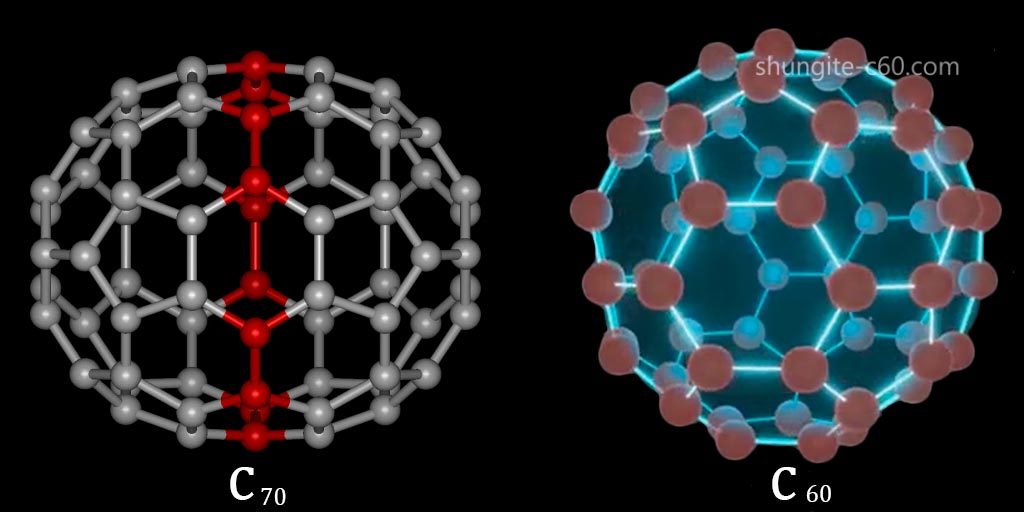
Shungite fullerenes in water
Fullerenes in shungite were found as molecules C60 and C70. It was found that the unusual moleculeus have a hydrated form, allowing them to dissolve in water. Perhaps this is an explanation for the theories in the field of scientific studies of the beneficial properties of water that has been in contact with this mineral.
Also as Russian stone suspensions, which are obtained by mixing with olive oil. There are two types of shungite in Karelia. It is classic black shungite and elite shungite. On our site there is also an article – What is shungite. This is describes in more detail this rare mineral as well as its properties and types.
Very clean water in a natural reservoir, one of the cleanest in the world (cleaner than Baikal) – in lake Onega. Because, the bottom and banks of which are composed of the rocks from Karelia. Perhaps the solution to the problems of providing high-quality drinking water to the inhabitants of the Earth should be looked for in natural filter. First of all, through the integrated use of various filtering minerals such as zeolite and Russian black stone.
Conclusion
In conclusion, the enigmatic properties of shungite fullerene continue to captivate the scientific world, offering a myriad of possibilities across diverse domains. From its potential in revolutionizing medicine to its role in fostering environmental sustainability and technological advancements, shungite fullerene remains a subject of both fascination and scrutiny, emphasizing the need for continued research and exploration.
